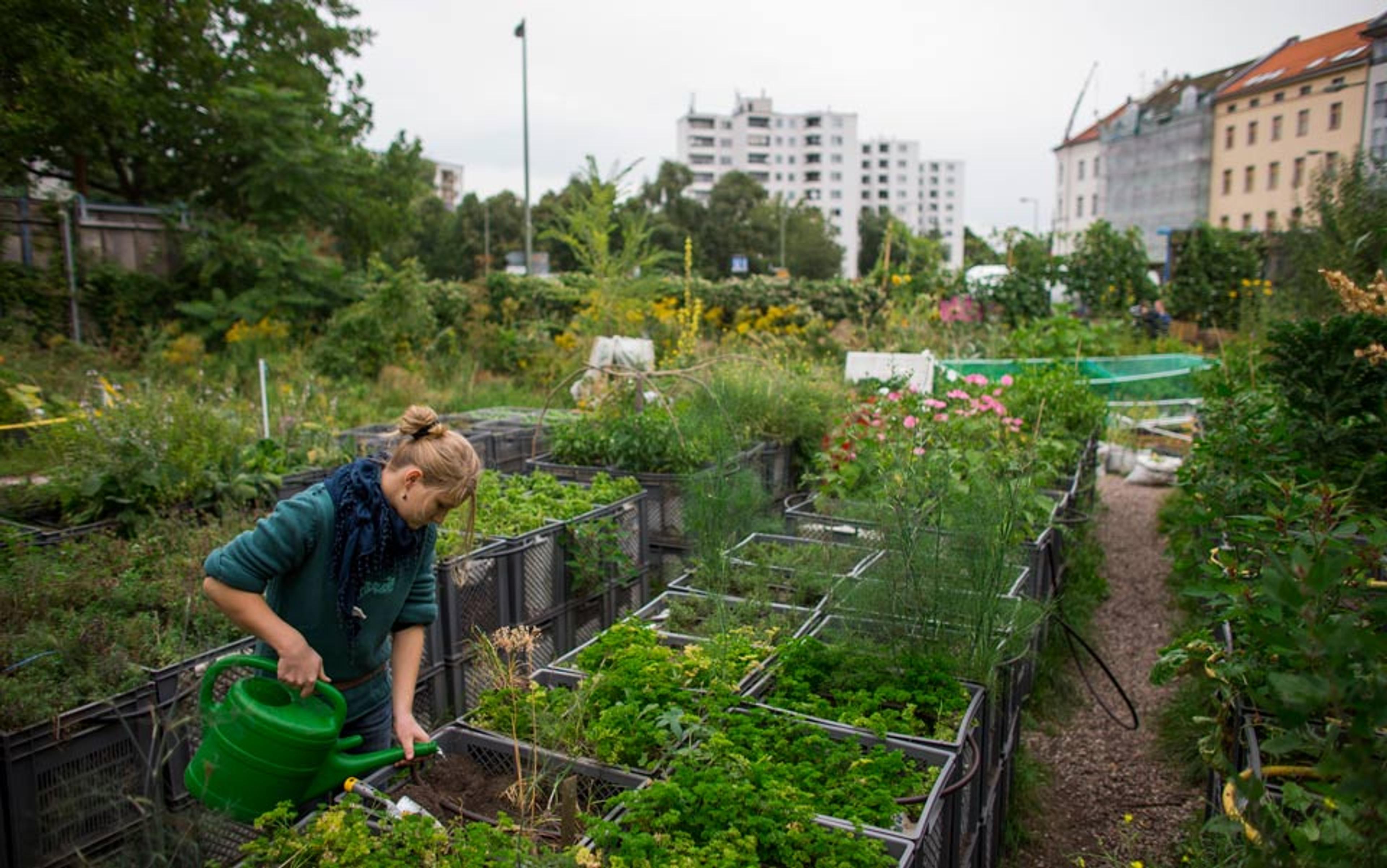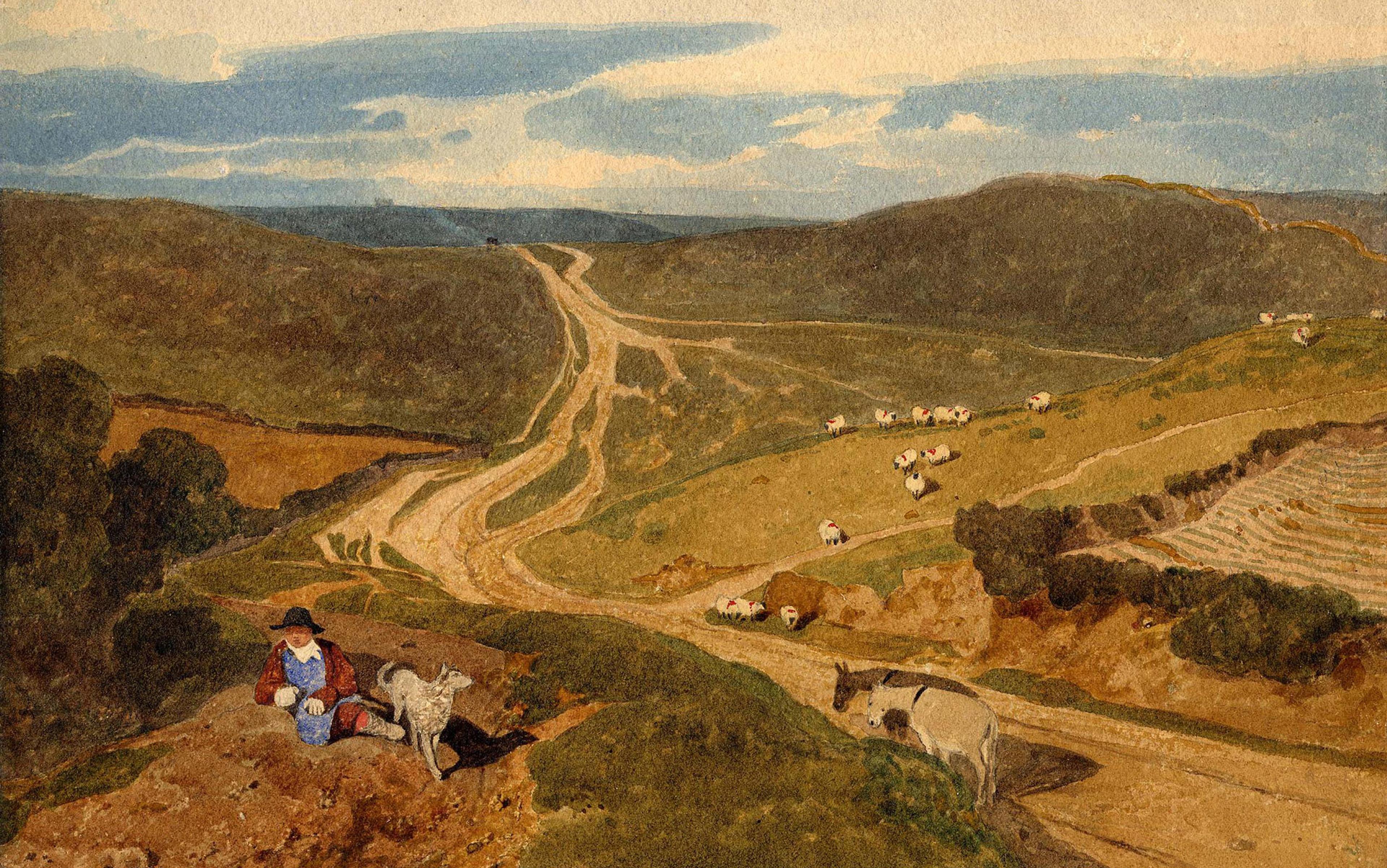Even to those who are thoroughly inured to warnings of impending catastrophe, the World Bank’s recent report on climate change, Turn Down the Heat (November, 2012), made for alarming reading. Looking at the consequences of four degrees of global warming, a likely outcome under current trajectories, the Bank concludes that the full scope of damage is almost impossible to project. Even so, it states: ‘The projected impacts on water availability, ecosystems, agriculture, and human health could lead to large-scale displacement of populations and have adverse consequences for human security and economic and trade systems.’ Among the calamities anticipated in the paper are large-scale dieback in the Amazon, the collapse of coral reef systems and the subsistence fishing communities that depend on them, and sharp declines in crop yields.
By contrast, most of us are already inured to the continuing catastrophe reported in the Bank’s annual World Development Report. Hundreds of millions of people go hungry every day. Tens of millions die every year from easily treatable or preventable diseases. Uncontrolled climate change could produce more crop failures and famines, and spread diseases and the pests that cause them even more widely.
Economic development and technological progress provide the only real hope of lifting billions of people out of poverty and destitution, just as it has done for the minority in the developed world. Yet the living standards of the developed world have been built on cheap energy from carbon-based fossil fuels. If everyone in the world used energy as Americans or even Europeans do, it would be impossible to restrict climate change to even four degrees of warming.
For those of us who seek a better life for everybody, the question of how much our environment can withstand is crucial. If current First World living standards can’t safely be extended to the rest of the world, the future holds either environmental catastrophe or an indefinite continuation of the age-old struggle between rich and poor. Of course, it might hold both.
In my first contribution to Aeon (‘The Golden Age’, 27 Sept 2012), I looked at an idea put forward by John Maynard Keynes: that within a few decades, with the right use of technology, we could achieve a society where people worked because they chose to rather than out of material necessity, a society in which working hours averaged 15 per week with no decline in quality of life. I focused on the technological and social constraints that could prevent us from achieving all this.
However, there is no point in drawing up a utopian vision if it can be realised only in one part of the world, leaving the global poor permanently locked out. In my previous essay, I argued that, with another 50 years of technological progress and a modest effort to help the poorest onto the path of rapid growth, poverty could be eliminated.
But can we share the advantages of the developed world with the entire population of the planet without running into limits on mineral and renewable resources? Not according to many environmentalists. They say we can’t even maintain them for the few people who presently enjoy them; that it’s technologically impossible to sustain current consumption levels on a global scale, let alone to spread prosperity more broadly.
Having spent much of my professional life as an economist studying problems of this kind, I’m convinced that this is not true. The question is not: ‘Can we let everyone live like prosperous residents of the First World without destroying our natural environment?’ It is: ‘Will we?’ A balance is achievable, if we want it. That goes against a lot of powerful convictions, of course. So, although arithmetic might not be part of everyone’s idea of utopia, we need to look at the numbers.
The first thing is to identify the right ones. Aggregates such as gross domestic product (GDP) often come up in this context, but they are of very little use. GDP is a measure of overall economic activity, produced to assist short-term macroeconomic management. By design, it takes no account of the usefulness of what is produced or of the specific resources used up in production. Unless you are an economic planner or central banker, you are better off ignoring it altogether. If you want to use a statistical aggregate, (Net) National Income is a better choice.
But to really understand the problem, we need to build up a more detailed picture of the economy, looking at those areas that must continue to expand and those that must contract. In general, we want to increase the flow of goods and services that generate wellbeing while cutting consumption of natural resources and requirements for hard and unsatisfying labour. We have limited resources, most especially of energy, food and water, and we can’t dodge decisions about how to allocate them.
Our use of coal, gas and oil could be reduced by 90 per cent, even while living standards increase greatly
Of the resource constraints we face, energy is the most critical. Our current reliance on carbon-based fuels is clearly unsustainable. For a decent chance of keeping global warming below two degrees C, America’s carbon dioxide emissions will have to fall to around 10 per cent of their current average by 2050, while other developed countries will have to cut emissions per head of the population to about 20 per cent. If climate change is not controlled, the effects on water supplies and food production could be catastrophic.
The trouble is, we use energy for everything we do, and most of it comes from burning carbon. The problem might seem insoluble. However, a careful analysis shows that our use of coal, gas and oil could be reduced by 90 per cent, even while living standards increase greatly.
Our current energy system is built on coal-fired electricity for most domestic and industrial purposes, with oil-fired combustion engines for transport. It didn’t have to be that way. With different choices at the turn of the 20th century, we might easily have had electric cars instead of petrol engines. Sadly, the greater speed and range available with internal combustion engines appealed to buyers, and those who had to put up with their noise and pollution had no say. On the other side of the coin, we might have used oil or gas for most of the purposes for which we currently use electricity — heating, refrigeration, air-conditioning, and so on.
Over the course of a century or more, we have built up a vast amount of infrastructure to support our existing technologies. Changing that will be a slow and expensive business, but it is nevertheless quite feasible. What seems more difficult is changing our fixed assumptions, inherited from the 20th century, about how energy systems must work.
Let’s start with what seems like the most intractable case, that of private motor vehicles. The freedom to drive when and where you want appeared in the 20th century as a great liberation, reflected in cultural products as different as Jack Kerouac’s novel On the Road (1957) and Thornton Wilder’s play The Happy Journey to Trenton and Camden (1931). The acquisition of a driving licence replaced the legal age of majority as the crucial rite of passage from child to adult. Understandably, people who grew up in the20th century are unwilling to give up that dream. On the other hand, the reality of commuting and traffic jams has given most people a more nuanced view of the relationship between driving and wellbeing than the one that prevailed in the early days of mass car ownership. Young people in both the US and the UK are driving less than members of previous generations, and many are not even bothering to obtain licences.
Even so, a 90 per cent reduction in car fuel use looks hard, at least without assuming big technological breakthroughs. But in fact, they aren’t necessary. The low-hanging fruit here is the increase in fuel-efficiency that would be available if existing technology were used. The average fuel efficiency of the current US car fleet, including gas-guzzlers such as the now-discontinued Hummer, is about 20 miles per US gallon. Current US policy requires that new cars meet an average fuel economy of 30 mpg (that’s on a test cycle; the 20 mpg figure above is the actual ratio of miles travelled to fuel used — corresponding to a test score of around 25 mpg). The requirement will go up to 35.5 mpg by 2016.
More strikingly, standards issued by President Barack Obama’s Administration last year require an improvement to 54.5 mpg for new cars by 2025. These requirements mean cost increases for car manufacturers, but they are clearly achievable with current technology. So, once the entire car fleet meets this standard (say around 2035), the fuel used to travel a given distance will be something like 40 per cent of the current level.
More reductions are possible if we approach the problem from a different angle. Around half of all car travel in developed countries is for work and shopping trips, and a fair bit of the remainder is due to errands of one kind or another. A society focused on using technology to promote leisure rather than increased consumption would have less need for such trips. It would also have the free time to take leisurely and pleasant modes of transport rather than fighting traffic.
This gain would be enhanced by the kinds of changes in attitudes that might be expected to accompany a society focused on the creative use of leisure rather than on work and consumption. In a consumer society, shopping trips are a common leisure activity, and a good deal of entertainment is little more than vicarious consumption. Unlike more leisurely forms of travel, shopping is heavily dependent on cars, both because of the design of shopping malls and because of the need to carry one’s purchases home.
In the meantime, the technological need for many kinds of travel has already disappeared as a result of the internet, video telephony, and other innovations. With Internet shopping, a large number of individual shopping trips can be replaced by a single delivery run. Up to now, this has had only a limited impact on the way we organise life and work, but that ought to change over time. There’s every reason to think that we could reduce our mileage by half without any reduction in living standards. Indeed, avoiding such travel would constitute an additional benefit of a more leisurely society.
In the US, car fuel use would drop to 20 per cent of current levels simply by adopting the 2025 fuel efficiency standards and halving the distances travelled. It would be more difficult to halve that again, but still feasible and still consistent with improving living standards.
One way to achieve this is to replace car travel with a combination of mass transit and walking or cycling. That, in turn, means living in cities. Fortuitously, while inner-city living was once associated with slums and poverty, it has now become the preferred lifestyle of a significant segment of the professional middle class. There is no technological reason why it could not be extended to a much larger portion of the population.
Another possibility, already realised on a limited scale, is to shift to electric cars. Since such cars are already on the market, the idea is technically feasible, though it would require a large-scale investment in infrastructure such as charging stations. The suggestion of a shift to electric cars naturally raises the question of whether we can generate the necessary electricity while phasing out the use of coal and, eventually, of gas as well. This was an open question as recently as a decade ago, but it’s now clear that it can be answered in the affirmative.
The rise of concern about climate change and global warming in the 1990s led to renewed interest in alternatives to carbon-based electricity generation. Some of these, most notably nuclear power, geothermal electricity and carbon sequestration, have not panned out. On the other hand, wind and particularly solar energy have delivered results beyond even the most optimistic assumptions. At the turn of the century the installed cost of a solar photovoltaic system was around US$10 per watt, making it prohibitively expensive outside a few remote locations. Today, it’s US$2-US$4 per watt and falling fast. Even with current technology, it would be perfectly possible to replace the existing energy system with a combination of wind and solar, backed up by hydro-electric and a limited amount of gas to handle fluctuations in demand.
The additional cost would amount to only a few per cent of current national income. That would entail a substantial increase in, or reallocation of, public and private investment in infrastructure, which is currently around six per cent of national income (there are a variety of different measures). But it is a small amount in relation to the productive capacity of a modern economy — smaller, for example, than the amount spent by governments on health care, or even than private expenditure in cafés and restaurants.
Poor people in Africa and South Asia have leapfrogged a century or more of technology
The big obstacle is not technology or cost but the fact that our existing electricity market structures and distribution networks are built on the assumption that power will be generated mainly by inflexible ‘baseload’ coal and nuclear plants. To ensure that they can meet peak demands during the day, such plants produce more power at night than anyone wants. So, ‘off-peak’ pricing structures are designed to deal with this excess supply. In a system based on solar and wind energy, the big problems will arise in the early evening, when the sun isn’t shining but demand for heating or cooling is high. These problems can be dealt with, but they will require a rethink of the system as a whole. We will have to reconfigure transmission and distribution networks, as well as pricing systems
In this respect, the poorest countries enjoy what development economists call ‘the advantages of backwardness’ (a term coined in the 1950s by the American economist Alexander Gerschenkron). Lacking access to electricity grids and fixed-line telephone networks, poor people in Africa and South Asia have leapfrogged a century or more of technology, going straight to mobile phones and solar photovoltaics. Around 600 million people now have ‘off-grid’ mobile phones, and the scale of solar installations is growing all the time. Grid connections will come in time, no doubt, but they will be designed to fit these new technologies rather than to distribute electricity from coal-fired plants. The future is one where technology adapts flexibly to human needs, rather than requiring ‘flexibility’ from humans to fit the demands of the economic machine.
At least as important as the source of energy is the way in which it is used. In almost all its applications, we could drastically cut energy use just by choosing the most efficient technology that is currently available. In Australia, we have a star-rating system to describe the efficiency of household appliances. A six-star air conditioner is more than twice as efficient as a one-star model, and recent improvements have required additional ratings up to 10 stars. It will take a long time for existing buildings to catch up with these advances, but with consistent effort these gains can be achieved over the next couple of decades.
To sum up, there is no technological obstacle to reducing carbon dioxide emissions by 80 to 90 per cent over a few decades. But can this be done while improving living standards and increasing leisure? To answer this question, a bit more arithmetic is needed.
At current prices, energy use in developed countries accounts for around five per cent of national income (commonly, though misleadingly, measured by GDP). Even on conservative estimates, the cost of zero-carbon alternatives is no more than double that of carbon-based energy — that is, around 10 per cent of our current income. So, a complete switch might reduce income, net of energy costs, by around five per cent. Again, that’s roughly what we spend each year on cafés and restaurants.
On the other hand, technological progress allows us to increase national income by around one to two per cent each year or, alternatively, to generate the same income with one to two per cent less labour. So, the cost of a zero-carbon energy system is equivalent to between two and five years’ worth of technological progress.
Over a decade or two, the cost of the transition to a zero-carbon energy system would be a marginal slowdown in the rate at which living standards improve. In my last essay, I argued that we could achieve a middle-class standard of living for everyone, with an average labour input of 15 hours a week, by 2060. Taking account of the need to shift away from carbon-based fuels might put off this goal by a few years, but does not affect its feasibility.
As I have said, the problem of stabilising the global climate is not ‘Can we?’ but ‘Will we?’ When the Kyoto protocol was agreed in 1997, the world seemed to be on the path to a steady reduction in global emissions. Instead, foot-dragging by major nations, most notably China and the US, has slowed progress. A large section of the political right, at least in English-speaking countries, has turned rejection of climate science into a major front in the culture wars that dominate a tribalist approach to politics. There have been some cheering developments, such as China’s embrace of renewable energy, but it remains uncertain whether we will act in time to save the planet.
In the meantime, can we feed the people? The world’s population is now seven billion, of whom around one billion regularly go hungry. UN projections suggest that the world’s population is likely to reach 9.3 billion, or perhaps more, by 2050, before stabilising around 10 billion. If we are to feed those who are currently hungry and extend the current average to the extra three billion or so who have yet to join us, we would need to increase global food output by close to 50 per cent over the next 40 years.
The good news is that, based on 20th-century experience, this shouldn’t be too hard. The required rate of growth in food production is one per cent a year, while the rate of productivity growth in agriculture since 1945 has been about two per cent a year. That shouldn’t be surprising. Food supply per person grew substantially over the 20th century, which implies that production outpaced population growth. Some of this additional output was due to expansion on to marginal land and to increased use of fertilisers. Even more was due to improved crops such as the dwarf wheat and rice varieties that generated the ‘Green Revolution’ of the 1960s and 1970s, enabling countries such as India to feed themselves.
Population growth is slowing, so if productivity continues to improve at the historical rate, the increase in food per person will continue or even accelerate. In other words, if historical trends continue and other demands remain unchanged, the problem of feeding the world could be solved with our existing arable land and with a continued decline in the number of people working in agriculture.
Unfortunately, there is no guarantee of continued progress in production or equitable distribution of food. In fact, there are many reasons to think that productivity improvements might have slowed and are likely to slow further. The publicly funded research institutions that drove the Green Revolution have almost been squeezed out of existence in the era of neoliberalism. The private sector replacement has focused on initiatives such as genetically modified (GM) crops, whose profits are easy to capture. Unfortunately, while GM technology has proved to be relatively safe and has yielded some productivity improvements, it has fallen far short of the expectations of its proponents and of the gains yielded by earlier innovations.
The number of chronically undernourished people in the world has declined from nearly one billion in 1990 to 870 million today
Furthermore, many existing food production systems are not sustainable in their current forms. The problems are most acute with fish, which are the primary source of protein for hundreds of millions of people. Most fisheries in the world are overfished and many have passed the point of inevitable collapse. As Australian experience has shown, it is possible to manage fisheries using quota systems, but such systems typically require a substantial reduction in the number of boats and fishers. That means they face strong resistance even when compensation is available. In poor countries, it often isn’t, and neither are the resources to enforce restrictions. Attempts to achieve sustainability while maintaining fishery output, such as the six-country Coral Triangle Initiative, have had some success, but overfishing is still the norm.
The situation with meat is less dire but still requires careful management. Ruminants such as cattle and sheep emit lots of methane (mostly in belches) and are not very efficient at turning grain into meat. This means that a global diet with First World levels of animal protein consumption would require a shift towards chicken, eggs, and pork. That in turn raises ethical questions, especially regarding the factory production of chicken. Evidence is limited here but, at least for eggs, the free-range alternative does not require a substantial increase in feed. Free-range eggs now account for 25 per cent of the Australian market and that share is rising. In the UK, that figure is even higher — around half of all eggs sold are free-range. A utopian vision for humans shouldn’t have to rest on a miserable life for animals.
If we act decisively, there are no resource constraints to prevent a world population of 10 billion people from eating well and sustainably by 2050. The real problem is that, with the global economy organised as it is, increases in food production don’t necessarily mean a reduction in hunger and malnutrition. Most of the increase in food production has gone to meet the demands of people in rapidly growing middle-income countries. Understandably, they want to share the diet of the rich world, eating more meat, fruit and vegetables, and less rice and wheat. And even this process has had beneficial consequences. According to estimates from the UN’s Food and Agriculture Organisation, the number of chronically undernourished people in the world has declined from nearly one billion in 1990 to 870 million today. The reduction is a little more impressive when expressed in proportional terms: from 19 per cent of the world’s population then to 12.5 per cent now. Over time and across countries, that decline closely tracks reductions in poverty. It is only loosely correlated with food production.
But it remains a grim fact that in a global market, food goes to those who can pay for it. So, even though the world produces more than enough to feed everybody well and could easily produce more, a little under a billion people still go hungry every day. As I argued in my earlier essay, even a modest redistribution of global wealth towards the poorest people would allow rapid progress towards the UN’s number one millennium development goal of halving, between 1990 and 2015, the number of people who suffer from hunger. The (mostly undelivered) funding commitments made by rich nations towards those goals include giving a mere 0.7 per cent of their national income to development aid.
If we embraced a vision of a genuinely good life perhaps it wouldn’t be so hard to see the benefits in extending that opportunity to everyone
Remember again that the productive capacity of the global economy, for given inputs of labour, capital and materials, grows by around two per cent every year. If the citizens of rich countries were willing to allocate the extra output from even a few months of this growth to development aid, rather than to increased personal consumption, the UN’s goal could be met with ease.
There are well-known political difficulties here. The average American believes that 25 per cent of the US government budget is spent on foreign aid and would like to cut this to 10 per cent. The true figure is that the US government spends one per cent of its budget (or about 0.2 per cent of US national income) and most of this goes to countries that don’t really need help but are politically important to the US. This is a problem that seems insoluble within current political structures. Yet if we embraced a vision of a genuinely good life, abandoning the quest for ever more personal consumption, perhaps it wouldn’t be so hard to see the benefits in extending that opportunity to everyone. That’s not guaranteed. The residents of a Keynesian utopia might be happy to live as the post-human and pampered Eloi do in HG Wells’s The Time Machine, while ignoring the Morlock grunts toiling out of sight. Of course, such an attitude would ultimately lead to disaster, as it does in the novel.
But I’m an optimist in this regard. Despite all the difficulties of reaching an international agreement, and the desperate resistance of rightwing culture warriors, the world is gradually moving to reduce carbon dioxide emissions. Aid has been grudging and inadequate, yet efforts to rid the world of hunger and diseases such as HIV and malaria are achieving significant successes, with a fair chance that we might reach the UN millennium development goals in advance of the target date. Most significantly, in the wake of the global financial crisis, the culture of conspicuous consumption that characterised and helped to bring down the preceding gilded age seems finally to be losing its hold. In the US, the electoral defeat of Mitt Romney and his Wall Street backers is another hopeful sign.
The ultimate barriers to achieving a good life for all, free of the lash of financial necessity, are neither technological nor environmental. They are in our beliefs, values and social institutions. If we collectively prefer to stay on the treadmill, chasing bigger and better consumption goods, we can do that, at least until we hit the limits of sustainability. But if we choose to use the opportunities given to us by technology to eliminate poverty and drudgery, and to protect and restore the environment, that choice is equally open to us. The world can’t sustain the current consumption patterns of one billion rich people, let alone 10 billion. Yet everyone could have a better life right now with less energy use, more leisure, and drastically lower emissions of greenhouse gases. And, over a few decades, there’s nothing to stop the whole world’s population from attaining living standards at least as good as, though not the same as, those currently enjoyed by those of us in the developed world.






